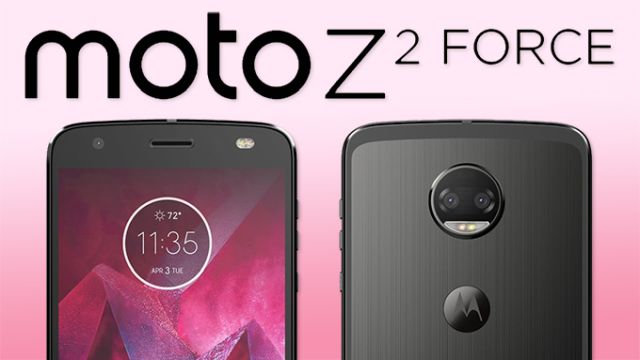
by Editor | May 25, 2021 | Branding, Business, Markets, Medium Enterprise, Technology

Samsung Galaxy S9+
By Krishna SinhaChaudhury,
New Delhi : We’ve seen Samsung introducing major improvements in its flagship Galaxy S series over the years and this year’s launches — Galaxy S9 and Galaxy S9+ — are no different.
A section of users are of the view that Galaxy S9 series is not a radical departure from its predecessors. However, the new line-up has a plethora of small changes which will come in handy.
At Rs 64,900 (for 64GB onboard storage variant), Galaxy S9+ comes with dual aperture and dual primary camera as its USPs. Does the smartphone pack in enough to compete against other flagships? Here is our view.
With the same curved glass-sandwich design, metal sides and bump-less camera setup on the rear, Galaxy S9+ looks almost identical to its predecessor.
The front is dominated by a big, gorgeous 6.2-inch Quad HD+ AMOLED display which made black colour look deep and rich.
The display with 18.5:9 ratio curves away on each side to meet the frame that made it look alluring, thus making Galaxy S9+ one of few devices that deliver an immersive viewing experience.
We particularly liked how Samsung has squeezed the display into a narrow frame that made it surprisingly easy to hold when compared to its rivals such as Google Pixel 2 XL.
This is still a big device, but one key change over last year’s Galaxy S8+ is the position of the fingerprint scanner on the rear. It now sits below the rear cameras, making it much easier to reach.
The tiny bezels at the top house the iris scanner, various sensors and a selfie camera.
The primary 12MP dual cameras with optical image stabilisation (OIS), “Dual Pixel” AF is a major upgrade from last year.
The company has debuted dual or variable aperture for the first time on its device where the lens can go from f/1.5 to f/2.4. Notably, this is not a mere software gimmick but we could actually see the aperture closing and opening.
When in a dark environment, the lens opens up to a wide aperture of f/1.5 to let in more light, quite like a human eye. Meanwhile, in bright conditions, the lens defaults to f/2.4 aperture.
This is the best Android camera that produced photos with great dynamic range and well-balanced details, irrespective of the lighting scenarios. The low-light camera performance was impressive.
The camera app interface has been tweaked and made much easier. The various modes are now selectable by swiping right or left on the display.
The 8MP AF (f/1.7) front camera is one of the best selfie cameras out there. It captured detailed self-portraits and did fairly well in dim-lighting conditions.
One great thing about the camera is the super slow-motion mode that can shoot videos at 960 frames per second.
Samsung has also debuted Augmented Reality (AR) emoji with the device. Some found that creepy while others took it as fun. We found it both fun and easy to use.
You can create your virtual avatar by clicking a photo and the smartphone generates a version that can be customised with several hairstyle and outfits.
Galaxy S9+ is powered by Samsung’s latest homegrown “Exynos 9810” chipset coupled with 6GB RAM and 64GB/128GB/256GB onboard storage which can be upgraded up to 400GB via microSD card slot.
The flagship processor ensured excellent performance and there was no stutter during multi-tasking or gaming with high-end graphics.
Galaxy S9+ retains a standard 3.5-mm headphone jack which should appeal to most users. Samsung has also made the device weatherproof with IP68 dust and water resistance.
The device is one of the first Samsung smartphones to run Android 8.0 Oreo Operating System. It comes with “Samsung Experience 9.0” on top.
S9+ has the capability to duplicate messaging apps such as WhatsApp, Facebook and Messenger where the users can run two social media accounts at a time.
What does not work?
We did not find any significant improvement in the company’s own personal assistant “Bixby” from last year.
There is a dedicated Bixby button which cannot be customised to perform other functions.
Conclusion: Galaxy S9+ sure has a head-turning design, amazing display and excellent camera with snappy performance. It packs everything a user would expect from a single premium package.
(Krishna SinhaChaudhury can be contacted at krishna.s@ians.in)
—IANS

by Editor | May 25, 2021 | Business, Markets, Medium Enterprise, SMEs, Technology
 New Delhi : Expanding its portfolio of mobile computers, Zebra Technologies, a global leader in providing solutions and services to enterprises, on Thursday introduced “TC20” mobile computer and “TC25” rugged smartphone in India.
New Delhi : Expanding its portfolio of mobile computers, Zebra Technologies, a global leader in providing solutions and services to enterprises, on Thursday introduced “TC20” mobile computer and “TC25” rugged smartphone in India.
“TC20” will cost $500-$600 while and “TC25” will be available for $530-$600 depending on the specifications, the company said.
“Until now, Small and Medium Businesses (SMBs) had options like struggling with the risk and frustration of using consumer devices or running their operations manually with pen and paper. ‘TC20’ and ‘TC25’ give SMBs a better choice,” Deep Agarwal, Regional Sales Director-India, Zebra Technologies, said in a statement.
Both the devices feature 4.3-inch screens and run Android Nougat Operating System (OS).
Zebra’s “TC20” is a lightweight and durable mobile device developed for indoor use by sectors such as retail and hospitality while “TC25” would allow real-time operational visibility on the field for SMBs in logistics or services industries, the company added.
The devices also support voice communications over wireless LAN while “TC25” supports 4G/LTE connectivity too.
“TC20” and “TC25” have been designed for 1D and 2D barcode scanning and Radio-Frequency Identification (RFID) tag reading.
The TC2-series devices can capture barcodes substantially quicker than the cameras on consumer smartphones, thus saving time, the company said.
Designed as an enterprise line of business smartphone, both the devices are powered by software such as Datawedge, StageNow and Mobility Extensions (Mx).
—IANS

by Editor | May 25, 2021 | Business, Marketing Basics, Markets, Medium Enterprise, Technology

Moto Z2 Force
By Krishna SinhaChaudhury,
New Delhi : Lenovo-owned Motorola’s latest premium offering Moto Z2 Force, with dual rear cameras, is here and the company is selling it as a phone with a shatter-proof display.
Moto Z2 Force essentially replaces the original Moto Z with Moto “ShatterShield” technology as its USP and a bundled Moto “TurboPower mod pack” in India for Rs 34,999.
How does the smartphone fare when it comes to everyday usage? Here is our review.
The smartphone has a 5.5-inch Quad HD AMOLED shatterproof screen that did withstand drops and falls during our review test from approximately 3-4 feet height.
Despite being launched in 2018, the device features 16:9 aspect ratio that is now outdated as other flagships such as Galaxy S9, OnePlus 5T and Honor View10 are now offering a better 18:9 display — and this might be a put-off for those who want more a immersive experience.
Having said that, the good colour reproduction and viewing angles of the display mostly make up for the loss of screen space. It was bright with decent sunlight legibility.
The front of the phone is dominated by thick bezels above and below the screen, which was also present in the original Moto Z. This is because the company had promised that at least three generations of Moto Z phones would be compatible with the original “Moto Mod” — a clip-on accessory that transforms Moto Z Force into a super-zoom camera, a boombox, a projector and more.
There is an earpiece above the AMOLED screen that also houses the loudspeaker.
There is a 5MP selfie camera with a flash which was capable of taking decent self portraits.
Moto Z2 Force is comfortable to hold and for single-handed use but feels slippery when used without a Mod or a protective case.
The device is made of 7000 series aluminium which made the exterior look both tough and appealing. An added advantage of water-repellent nano-coating is there to protect the device from accidental spills or splashes.
The 12MP dual primary camera sensors come with phase detection autofocus (PDAF) and 4k video recording. It took good photographs in well-lit conditions with accurate colour saturation levels.
The phone runs Android Oreo Operating System (OS) and offered an enhanced stock Android experience.
Motorola has added features such as “one-button” navigation, “double chop” gesture to turn the flashlight on or off, twist the phone to launch the camera and take screenshot by placing three fingers on the screen, among others.
Coming to its performance, the Moto Z2 Force is powered by a Snapdragon 835 chipset which is the same as in OnePlus 5T device.
The phone offered snappy performance most of the time and the fingerprint sensor below the display interested us the most.
The phone can be put to sleep with a long-press and the same button can unlock the device.
What does not work?
The absence of weather-proofing could be a major put-off for most users.
We also noticed that the display was extremely prone to scratches even as it doesn’t shatter or crack easily.
Conclusion: This is undoubtedly a well-built device with Motorola’s promise of timely updates. If you are looking for a sturdy device with stock Android experience, go for it.
(Krishna SinhaChaudhury can be contacted at krishna.s@ians.in )
—IANS

by Editor | May 25, 2021 | Branding, Business, Large Enterprise, Marketing Basics, Markets, Technology
 By Nishant Arora,
By Nishant Arora,
New Delhi : Aiming to help domestic smartphone manufacturers recover lost ground, the government has taken several measures in the recent past, like easing norms for local manufacturing and hiking customs duty on mobile phones.
The efforts, however, have brought little cheer for the beleaguered local vendors, as Chinese players — now a dominant force — have begun manufacturing/assembling nearly 100 per cent of their products being sold in the country.
The collective market share of China-based vendors — especially Xiaomi, Vivo, Lenovo, OPPO and Huawei (Honor) — in India stands at 53 per cent in 2017, says International Data Corporation (IDC).
According to Counterpoint Research, the combined market share of four top Indian brands — Micromax, Lava, Intex and Karbonn — was a mere 12.5 per cent last year.
Domestic players do take cognizance of the government’s efforts, but realise the strength of the Chinese vendors when it comes to providing superlative user-experience at affordable prices — and robust distribution networks and mass-scale indigenous production.
“China-based vendors are producing handsets that give enhanced experience to the Indian consumers which is not being provided by the domestic manufacturers. Most of the Chinese vendors are now manufacturing and locally sourcing parts so they are not affected by changes in the policy,” Jaipal Singh, Senior Market Analyst, IDC India, told IANS.
Chinese vendors are very aggressive when it comes to market expansion. Backed by top-of-the-line innovation, they know the game when it comes to product line-up, distribution network and presence in both online and offline segments.
Tarun Pathak, Associate Director at Counterpoint, believes the issues which local brands are facing have more to do with their target audience than anything else.
“While Chinese players are able to attract new users across different price bands, the Indian players have largely been restricted to the sub-Rs 6,000 price category. On top of it, they are heavily outspent by Chinese brands in terms of marketing and advertising,” Pathak told IANS.
Four-five years back, when smartphone players like Sony, HTC and Samsung were ruling the roost, local mobile accessories distributors sensed the immense opportunity and launched affordable handsets.
In the 2013-2014 period, the domestic brands quickly gained traction and enjoyed 40-45 per cent market share — till the time Chinese behemoths entered the fray.
Indian players feel that lack of a level-playing field in terms of cost of capital, logistics or production has hampered their prospects.
“In China, every state has a separate budget to support local manufacturers, apart from what the central government offers. There are several problems local manufacturers are facing in India while operating businesses in the states,” Nidhi Markanday, Director, Intex Technologies, told IANS.
“A separate budget would help local manufacturers attract new businesses, apart from adding positive impact on the ease of doing business agenda of the government,” she added.
In addition, the Intex executive stressed, local manufacturers must be incentivised in order to achieve economies of scale and exports of electronics, including mobiles and accessories.
The government has already come up with a phased manufacturing plan to boost indigenous production of mobile phones by providing tax relief and other incentives on components and accessories used for the devices.
In this scenario, Sanjeev Agarwal, Chief Manufacturing Officer, LAVA International, is still confident of growth despite fierce competition.
“We believe that the appropriate way to handle competition is to play on your strengths. Our biggest strength is that being an Indian multinational company, we understand the pulse of the consumers well. We understand the market dynamics and the requirements of the Indian consumers,” Agarwal told IANS.
For 2017, Micromax had 5.4 per cent market share, followed by Lava at 2.6 per cent, Intex at 2.5 per cent and Karbonn at 2 per cent. Xiaomi alone had 20.9 per cent market share for the entire year.
“We have several strategic tie-ups in the e-commerce space as well. These have been our strengths, helping us to maintain good growth despite tough competition. Counting on these advantages, I am confident of maintaining and further reinforcing our presence in the market,” Agarwal hoped.
In order to make a real comeback, said Pathak, local brands need to scale up the price bands by targeting a multi-channel distribution approach and introducing key features at a similar pace, if not faster, than the Chinese competitors.
“This will not happen overnight and till that time, they need to play to their strengths, which means capturing a larger pie of the sub-$75 (less than Rs 5,000) segment,” Pathak added.
Here, domestic brands now have to deal with another local giant — Reliance JioPhone. With 27 percent market share (by shipment), Reliance JioPhone became the leading feature phone brand in the country in the fourth quarter last year.
“In a value-conscious market like India, another option is to partner big telcos and offer bundled products with free data. This will give the Indian vendors some base going forward,” added Singh.
(Nishant Arora can be contacted at nishant.a@ians.in)
—IANS

by Editor | May 25, 2021 | Business, Economy, Markets, Medium Enterprise, News, SMEs, Technology
 New Delhi : Despite the government’s continuous push to help domestic smartphone manufacturers, China-based vendors are thriving and their collective market share has reached a massive 53 per cent in 2017 from 34 percent a year ago, International Data Corporation (IDC) has said.
New Delhi : Despite the government’s continuous push to help domestic smartphone manufacturers, China-based vendors are thriving and their collective market share has reached a massive 53 per cent in 2017 from 34 percent a year ago, International Data Corporation (IDC) has said.
“The untapped demand in the lower-tier cities remains the key attraction for China-based brands to explore the growth trajectory in India,” said Jaipal Singh, Senior Market Analyst, IDC India.
Their strength in their home market of China and weakening position of local players has helped some of these China-based players to solidify their operations in India,” he added.
Finance Minister Arun Jaitley in the Union Budget announced a hike in customs duty on mobile phones to 20 per cent from 15 per cent.
“Customs duty on import of mobile phone parts will be increased to 20 per cent from the existing 15 per cent. This will boost jobs in the smartphone sector in India,” Jaitley said during his speech.
According to the IDC’s “Quarterly Mobile Phone Tracker”, the Indian smartphone market witnessed a healthy 14 per cent annual growth with a total shipment of 124 million units in 2017 — making it the fastest growing market amongst the top 20 smartphone markets globally.
The market resumed its double-digit growth after a temporary slowdown in 2016 caused by factors such as demonetisation and a shortage of smartphone components.
This contrasts with China, the world’s largest smartphone market that saw its first decline this year, while the US was relatively flat.
When it comes to feature phones, 2017 was an exceptional year for this category as it witnessed a 17 per cent annual growth after declining for three consecutive years.
While feature phones remain relevant to a large consumer base in India, the Indian telecom operator Reliance Jio shipped huge shipments of 4G enabled feature phones taking the leadership position in its maiden quarter in this category, IDC said.
This resulted in a total of 164 million feature phone shipments in 2017 from 140 million a year ago.
“Xiaomi taking a lead over Samsung in the smartphone market and Reliance Jio emerging as the leading feature phone company in India were the two key highlights of the last quarter of 2017,” said Upasana Joshi, Senior Market Analyst, IDC India.
—IANS





